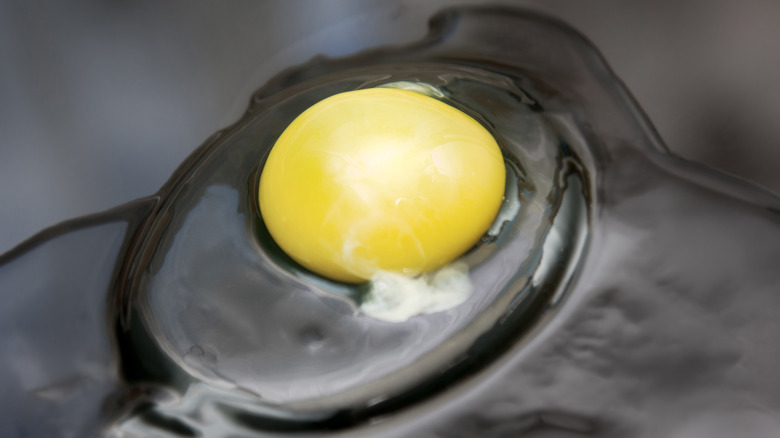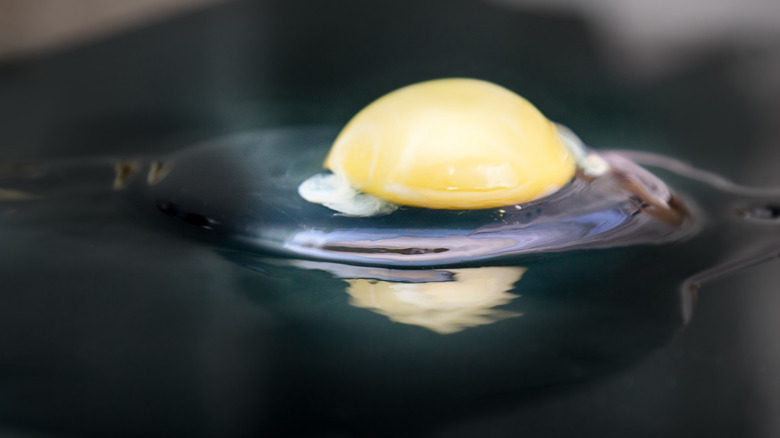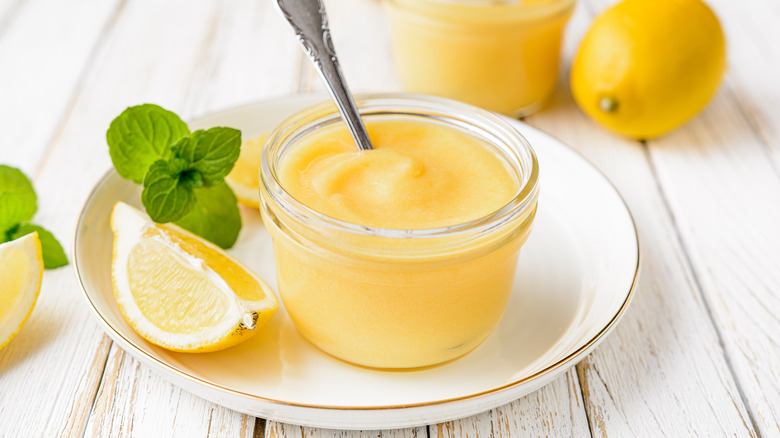The White String You Can See In Raw Egg Yolks Has A Name
By this point, you have probably cracked hundreds, if not thousands, of eggs in your time in the kitchen. Raw eggs aren't appealing, obviously, but have you ever looked closely at one? There's the yellow yolk (or orange, depending on the hen's diet, per Organic Valley Coop), and the clear transparent white. But there's something else in that egg that seems ... odd.
It's that little white ropy thing that is attached to the yolk. It's kind of tough and looks icky. Sometimes it's really obvious, and other times it seems less intrusive. What on earth is it? Does it have a name? Is it safe to eat? And what does it do?
In reality, that little stringy thing has a purpose and a name. It's called a chalaza (chalazae is the plural), according to Science Direct. In fact, the website says that the chalazae is a film that covers the entire yolk and the fibers at both ends wind up as it turns around in the hen's uterus, giving the structure its signature ropy appearance.
The chalaza can be a tell-tale sign for cooks
First, let's dispel some rumors. The chalazae (there are actually two in each egg, one on either side of the yolk, as you can see in this drawing from Vermont's Extension), are not a mini embryo or chicken sperm, according to Boston.com, which adds that a clearly visible chalaza means your eggs are fresh. They are also not an umbilical cord, per HuffPost.
Most commercially produced eggs are unfertilized, according to Michigan State University Extension, so you don't have to worry that you are eating a chicken embryo. Most laying hens have never even met a rooster in real life.
So what is the purpose of this stringy fluff? HuffPost adds that those strings hold the yolk in place inside the egg white, so it doesn't bump up against the shell. They act like a kind of hammock. They are made of protein and are completely edible and safe to eat when cooked through.
Remove the chalaza for perfect custard
Whether you choose to remove the chalazae or not depends on what you are making and your personal preference. If you are using eggs while baking, don't worry about the chalaza. They will also disappear if you are making scrambled eggs. If you are separating the whites from the yolks, removing the chalazae may break the yolk, meaning you'll never get a white free from the yolk so your meringues will fail.
But for perfect custards, you can remove the chalazae with a fork or chopsticks (perhaps using this cool tool that is officially patented in the United States), or you can strain the custard after it's cooked and before you cool it.
Use those chalazae-free eggs to make a rich vanilla custard sauce, or some smooth and tangy lemon curd. If you really want to impress someone, try floaty and light meringue clouds with custard. And when fresh strawberries are in season, make a celestial frozen strawberry custard.


